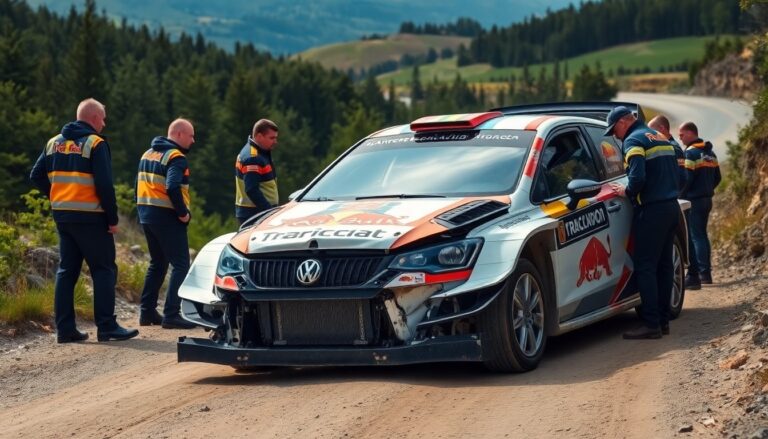Argomenti trattati
In an event highlighting the paramount importance of safety in motorsport, Thierry Neuville, the reigning champion of the World Rally Championship (WRC), shared a harrowing experience from the Central European Rally. He expressed deep gratitude for the safety protocols implemented by the WRC, which were crucial in ensuring that both he and his co-driver, Martijn Wydaeghe, emerged unscathed from a serious crash.
The incident occurred when Neuville’s vehicle collided with a bridge, an unexpected event that could have led to severe injuries. Fortunately, the bridge was protected by a hay bale, which cushioned the impact and contributed to their safety. This crash served as a stark reminder of the inherent risks associated with rally racing, underscoring the necessity for robust safety measures.
WRC safety measures: a lifeline for drivers
The World Rally Championship has long been recognized for its commitment to driver safety. Over the years, the organization has enacted various regulations and protocols designed to protect competitors during high-speed events. Neuville’s recent experience attests to the effectiveness of these measures, which have evolved significantly to address potential hazards on the course.
Impact of safety protocols on rally racing
A critical aspect of the WRC’s safety framework is the implementation of impact-absorbing barriers and protective installations, such as the hay bales present during Neuville’s crash. These barriers are strategically placed to absorb the force of collisions, lowering the likelihood of serious injury to drivers and co-drivers alike.
Additionally, the WRC mandates that all competing vehicles are equipped with advanced safety features, including reinforced roll cages and specialized seatbelts. These innovations ensure that drivers remain secure within the cockpit, even under extreme conditions. Neuville’s gratitude for these protocols reflects a shared sentiment among rally drivers regarding the importance of safety in their sport.
A close call and the lessons learned
Neuville’s crash became a pivotal moment not only for him but for the rallying community as a whole. Following the incident, both Neuville and Wydaeghe were taken to a hospital for precautionary examinations. Although the evaluations were routine, they highlighted the potential dangers that rally drivers face daily.
Rally racing: an exhilarating yet dangerous sport
Rally racing is known for its thrilling speeds and challenging terrains, often pushing both vehicles and drivers to the limit. While the excitement of competition is unmatched, it is essential for participants to recognize the risks involved. The WRC’s stringent safety protocols aim to balance the thrill of the race with the well-being of its competitors.
This balance is crucial, especially in light of incidents like Neuville’s, where outcomes could have been drastically different without protective measures. The WRC’s commitment to improving and innovating safety standards ensures that drivers can pursue their passion with enhanced security.
Ultimately, Neuville’s expression of thanks serves as a reminder of the ongoing efforts to enhance safety in motorsport. It highlights the need for the entire rally community to prioritize safety while embracing the sport’s exhilarating nature. The collaboration between drivers, teams, and regulatory bodies will be vital in shaping a safer future for rally racing.

